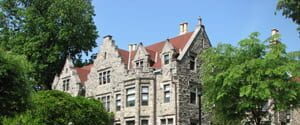Philadelphia Inquirer – February 5th, 2009
In the college counseling office at my school, we sometimes, I imagine, feel the way stock traders do these days. The numbers we keep track of also have been affected by the subprime meltdown and credit freeze. But drops in the number of college applications are not our problem; they are going up, especially at public universities.
As the dismal economic news accumulates, the world of higher education is feeling its impact in many ways. So what does this mean for college applicants? Although the landscape has changed, it’s still a good idea to consider a wide range of institutions, both public and private.
Last spring, in this newspaper, I argued that alarmist reports on the state of college admissions – sporting titles such as “Top Colleges Reject 90 Percent of Applicants!” – should be ignored, and that it was a great time to be applying to college. Programs had never been so varied, facilities had never been so extensive, and faculties had never been stronger.
I also suggested that small liberal-arts colleges, in particular, offered undergraduates excellent value: a wide range of academic programs, small classes, professors interested in teaching undergraduates, and excellent preparation for graduate school and the job market.
All of this remains true, but in other ways the picture has changed.
Many private and public colleges now have smaller endowments and therefore less income to pass on to students in the form of financial aid, To add to the strain, a higher proportion of the students in this year’s pool will need pieces of that smaller financial-aid pie.
Many middle-class families seem to have figured this out already. They are directing their college-bound children to apply to state universities rather than – or at least in addition to – private colleges. They worry, with good reason, that they will not be eligible for much financial aid, and they are very concerned about their ability to pay for college costs and take on more debt.
As a result, the main campuses of state university systems, in particular, are seeing big increases in applications. Some are reportedly experiencing jumps of more than 30 percent.
For students concerned about costs, state universities may well be a less expensive option, and it certainly makes sense to consider them. Keep in mind, however, that cuts in their budgets by financially strapped state legislatures, along with pressure to increase class sizes, will probably take a toll on their undergraduate divisions. Increases in applications will also make them harder to get into; this will be especially true for their honors colleges and other special programs.
For students determined to attend college in a major city – and there are many for whom this is a priority – the obvious choice is often a private university. Main campuses of state universities and small private colleges are not typically found in major urban centers, though there are some exceptions. The number of big-city schools is limited, and this contributes to making their applicant pools very competitive overall.
For students seeking a college environment in which the primary institutional focus is the undergraduates – where professors really are expected to be teachers, students are generally encouraged and supported, and opportunities to be involved in extracurricular activities abound – small liberal-arts colleges should be on the list. These institutions also will be dealing with fallout from the economic problems we are facing, but they will do all they can to make it possible for the students they admit to attend.
As counselors, we have always encouraged our students to apply to a range of schools, with the goal of having at least a few offers to choose from by May 1 (the national candidates reply date). In the current economic climate, this approach makes more sense than ever.

